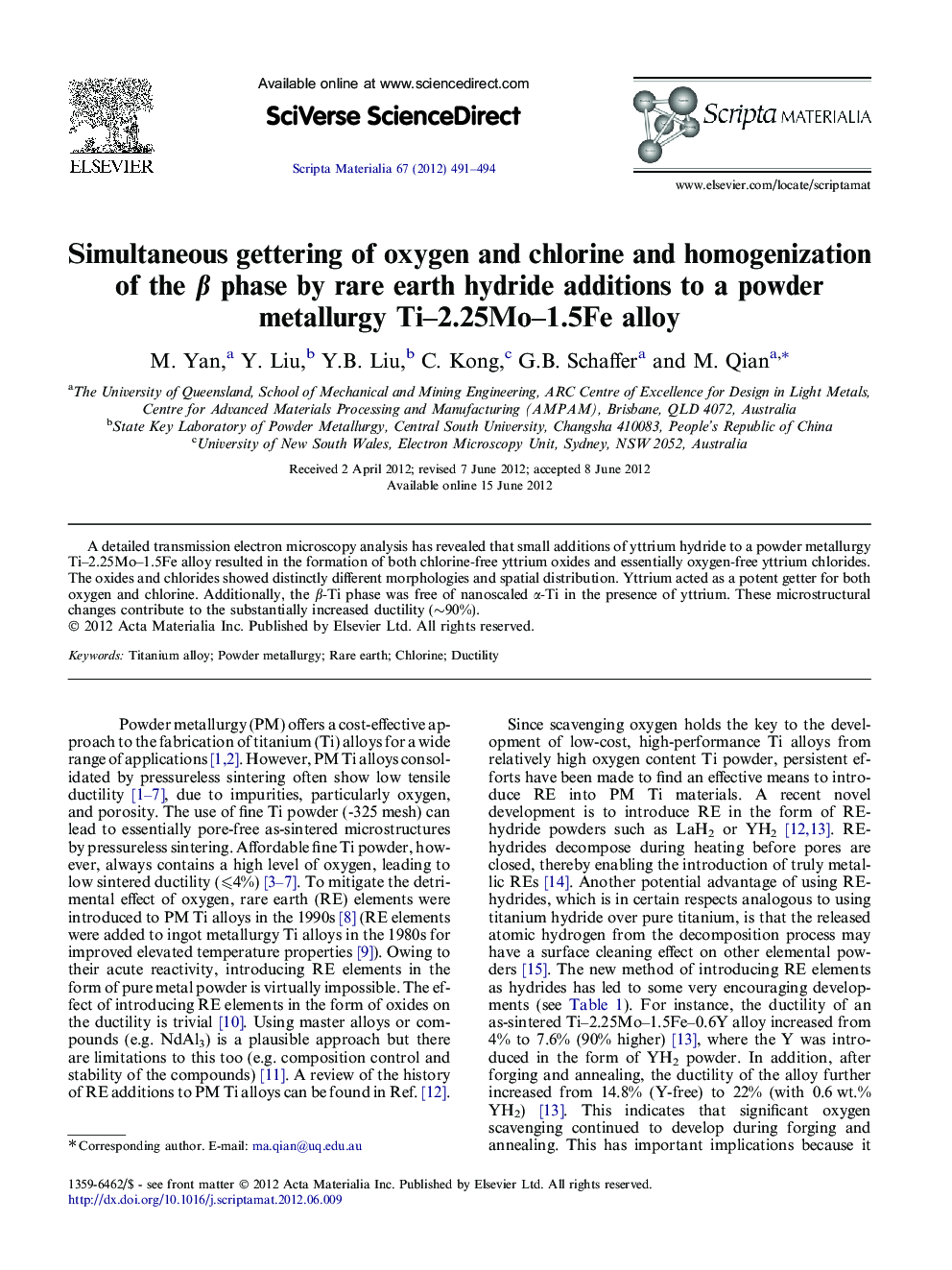| Article ID | Journal | Published Year | Pages | File Type |
|---|---|---|---|---|
| 1499669 | Scripta Materialia | 2012 | 4 Pages |
Abstract
A detailed transmission electron microscopy analysis has revealed that small additions of yttrium hydride to a powder metallurgy Ti–2.25Mo–1.5Fe alloy resulted in the formation of both chlorine-free yttrium oxides and essentially oxygen-free yttrium chlorides. The oxides and chlorides showed distinctly different morphologies and spatial distribution. Yttrium acted as a potent getter for both oxygen and chlorine. Additionally, the β-Ti phase was free of nanoscaled α-Ti in the presence of yttrium. These microstructural changes contribute to the substantially increased ductility (∼90%).
Related Topics
Physical Sciences and Engineering
Materials Science
Ceramics and Composites
Authors
M. Yan, Y. Liu, Y.B. Liu, C. Kong, G.B. Schaffer, M. Qian,
